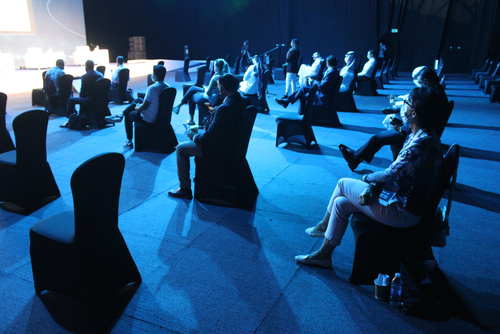
Marketing can be expensive, so it’s important to understand the costs that go into investments like big meetings and other corporate events.
All events are not the same. That’s an important mantra to keep in mind, especially when you run into budget mismanagement issues for a meeting or event.
What are some of the biggest event budget blunders? A top one is not understanding all the variations in market rates. From labor and booth cleaning to permits and heavy equipment rentals, you can spend a little at one event – and a whole lot more at another. When your budget isn’t built around market realities, you can feel the sting early.
Another event budgeting misstep involves not taking the geography of your meeting or event to heart. You might have your eyes set on a New York City trade show, but the Big Apple is heavily unionized. Understanding the roles and functions of union workers is crucial, so the process for putting your event together changes — and those changes need to be reflected in your event budget.
The point is that there’s far more to think about whether you’re activating an occasional one-off event or a regular series of them. The only way to make sure your event budget is in tip-top form is to future-proof it by spending time in the planning stage.
Planning for Event Budgeting Success
When you’re mapping out how much to allocate budget-wise to each part of your event, don’t guesstimate anything. You want to make sure that you stay well within comfortable guardrails so you don’t ruin your expected ROI.
That said, be sure to incorporate the following three items into your event budget.
Location Requirements: Variables such as permitting, engineering stamps, or ADA regulations deserve recognition in your event budget. Don’t forget about work-hour restrictions. These can all impact your budget, which may affect your overall design and engagement.
Build-Out Timing: When designing your event space, think about the money it will take to create your design – not just the fabrication but also the on-site logistics. At times, clients develop spectacular designs that require large crews and/or longer hours to complete the installation. This along with the transportation and material handling costs heavily impacts the budget.
On-Site Resources: Whether it’s on-site support staff, technical support staff, or build-out supervision, make sure you’ve considered the on-site requirements for your upcoming event. There are a lot of moving parts to keep track of.
Creating a Workable, Realistic Event Budget
Ready to dive in and build an event budget that gives you the peace of mind you deserve? Keep these event budget allocation strategies front and center:
1. Explore your past activations.
If you’ve activated at events like trade shows before, take a look at how much you’ve spent. Even if your event was several years ago, you’ll at least have a benchmark. Sure, you’ll have to take into account market variations and timing, such as activating during the holidays as opposed to the off-season. However, you’ll start from a stronger event budget standing.
Nothing beats having supportive evidence to get your event budgeting recommendations approved by a client or upper-level manager. Being able to compare events in an apples-to-apples sense shows you’re not just pulling figures out of the air.
2. List everything that could go into your activation.
If you’re starting from scratch (or even if you’re not), start asking big questions. Brainstorm all the considerations that could go into your event planning logistics. These could include “How do we get a forklift?” and “Where’s the power going to come from?” Nothing is off-limits.
Starting at a basic level ensures you don’t overlook anything later. Believe it or not, a forklift could sound minor (“We’ll figure it out!”) but end up having a huge financial impact (“Now we have to pay extra to get one!”). Good planning eliminates those unwanted surprises.
3. Identify your partners.
You can only be as strong as your partnerships, so choose your relationships wisely. You might have a fabrication partner, a staffing partner, or a vending partner. Meet with them. Ask their opinion. Talk about their event experiences.
For example, clients frequently come to us because they’re unsure of markets or venues we know well. We’re able to give them advice that can assist in their event budget planning and shed light on their event marketing misconceptions.
4. Expect post-pandemic event planning to be different.
Although there’s hope that supply chain issues will loosen and material costs will go down toward pre-pandemic rates, we’re not there yet. Labor availability and longer lead times are significant issues currently. Keep this in mind as you allocate your resources.
You may want to bake a little flexibility into your events post-pandemic. Chances are good that trade shows, festivals, and other events won’t be canceled like they were at the height of COVID-19. However, it’s best to incorporate some adaptability and wiggle room into your budget. Remember that just because you earmarked $100,000 doesn’t mean you have to spend it all in one place.
Budget planning for event management purposes can seem overwhelming. It doesn’t have to be. As you become more experienced, you’ll find it easier to construct straightforward event budgets that are right on the money.
Get our newsletter and digital focus reports

Stay current on learning and development trends, best practices, research, new products and technologies, case studies and much more.


